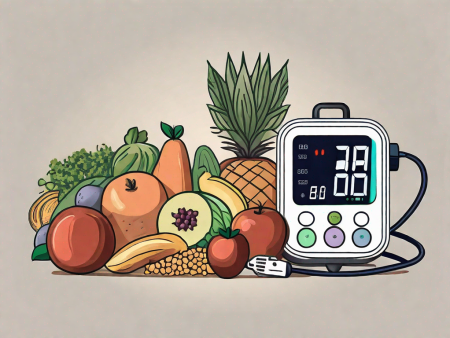Discover how changes in your posture can have a significant impact on your overall well-being.
Will I Notice Changes in My Posture?
Are you feeling a little crooked lately? Well, don’t worry, you’re not alone! Many people experience changes in their posture as they go through life. But the big question remains – will you even notice these changes? Let’s dive into the fascinating world of posture and find out!
Understanding the Basics of Posture
Before we get into the nitty-gritty of noticing changes in your posture, let’s first understand what posture is all about. Picture a majestic giraffe gracefully standing tall or a cat leisurely stretching on the back of a sofa – that’s posture! It’s the way you hold yourself, from head to toe, impacting how you look and feel.
Posture is not just a static position; it is a dynamic process that involves the coordination of various muscles and bones in your body. It is the alignment of your body parts in relation to each other, creating a balanced and efficient posture. Good posture allows your muscles and bones to work together harmoniously, supporting your spine and reducing the strain on various body areas.
But why is posture so important? Well, let’s delve deeper into its significance.

What is Posture and Why is it Important?
Posture is more than just standing up straight; it’s about maintaining proper alignment of your body parts. When you have good posture, your body is in a position that puts the least amount of strain on your muscles, ligaments, and joints. This reduces the risk of developing musculoskeletal imbalances, such as back pain, neck pain, and joint problems.
Furthermore, good posture allows for optimal functioning of your internal organs. When your body is properly aligned, it allows for efficient blood flow, digestion, and breathing. This can have a positive impact on your overall health and well-being.
Additionally, posture plays a crucial role in how you are perceived by others. When you stand or sit with confidence and poise, it exudes self-assurance and charisma. Good posture can make you look taller, slimmer, and more attractive. It can boost your self-esteem and make you feel more confident in social and professional settings.
The Role of Muscles and Bones in Posture
Let’s take a closer look at the dynamic duo behind your posture – your muscles and bones. Your muscles provide the necessary strength and flexibility, allowing you to maintain proper alignment and move with ease. They act as the active components of your posture, constantly working to support and stabilize your body.
On the other hand, your bones act as the supporting structure for your muscles. They provide a framework that allows for stability and balance. Without the support of your bones, your muscles would not be able to maintain proper alignment, leading to postural imbalances and potential injuries.
Together, your muscles and bones create the magical dance of posture. They work in harmony to maintain the natural curves of your spine, distribute your body weight evenly, and ensure that your joints are aligned. This allows for efficient movement and reduces the risk of strain and injury.
So, the next time you think about posture, remember that it’s not just about standing up straight. It’s about the intricate interplay between your muscles and bones, the alignment of your body parts, and the impact it has on your overall well-being. Take care of your posture, and it will take care of you!
Factors that Influence Posture Changes
Now that we understand the basics, it’s time to explore the factors that can influence changes in your posture. Brace yourself – some of these may surprise you!
Posture, the alignment and positioning of your body, is influenced by a variety of factors. Understanding these factors can help you make informed decisions to improve your posture and overall well-being.

Age and Posture
As the sands of time trickle away, changes in your posture become more apparent. Your body gradually loses its elasticity, and those youthful slouch-less days start to fade. The natural aging process can affect the strength and flexibility of your muscles, leading to changes in your posture. However, it’s important to note that age is not the sole determinant of posture. Regular exercise, stretching, and maintaining a healthy lifestyle can help mitigate the effects of aging on posture. By incorporating strength training and flexibility exercises into your routine, you can still stand tall and proud!
In addition to the physical changes associated with aging, psychological factors can also influence posture. As people age, they may experience a decline in self-confidence or body image, which can manifest in a slouched or hunched posture. Engaging in activities that promote self-esteem and body positivity can have a positive impact on posture and overall well-being.
Impact of Lifestyle on Posture
Remember the virtuous circle of sitting, eating, and sleeping that we all love so dearly? Well, it turns out that an inactive lifestyle or poor ergonomics can wreak havoc on your posture. When you spend long hours sitting or engaging in sedentary activities, such as binge-watching your favorite shows on Netflix, your muscles weaken and become imbalanced, leading to poor posture.
Furthermore, poor ergonomics in your daily activities can contribute to postural issues. Whether it’s using an uncomfortable office chair, slouching while driving, or hunching over your smartphone, these repetitive movements and positions can strain your muscles and affect your posture. To combat these negative effects, it’s important to take regular breaks, incorporate physical activity into your daily routine, and ensure that your work and living environments are ergonomically friendly.
Occupational Hazards and Posture
Do you sit like a statue for hours on end, glued to your office chair? Long hours spent in front of a computer screen can lead to posture woes. The sedentary nature of many occupations, coupled with poor ergonomics in the workplace, can contribute to postural imbalances and discomfort.
One common occupational hazard that affects posture is prolonged sitting. When you sit for extended periods, your hip flexor muscles become tight, your core muscles weaken, and your back muscles become strained. This combination can lead to a slouched posture and increased risk of developing musculoskeletal issues.
To counteract the negative effects of prolonged sitting, it’s important to incorporate regular movement and stretching into your workday. Taking short breaks to stand up, stretch, and walk around can help alleviate muscle tension and improve posture. Additionally, investing in ergonomic office furniture, such as an adjustable chair and desk, can provide proper support and alignment for your body.
Another occupational hazard that can impact posture is repetitive motion. Jobs that require repetitive movements, such as assembly line work or typing, can lead to muscle imbalances and postural issues. It’s crucial to take breaks, stretch, and practice proper body mechanics to minimize the strain on your muscles and maintain a healthy posture.
In conclusion, age, lifestyle, and occupational hazards can all influence changes in your posture. By understanding these factors and taking proactive steps to address them, you can improve your posture, reduce the risk of musculoskeletal issues, and enhance your overall well-being.
Identifying Changes in Your Posture
So, have you been wondering how to tell if your posture is up to par? Look no further! Here are some signs to help you become a posture detective.
But first, let’s delve into the fascinating world of posture. Did you know that good posture speaks volumes about your confidence and vitality? When you have good posture, you’ll stand tall, with your head held high, shoulders back, and chest out. It’s like wearing an invisible cape that exudes self-assurance and charisma.
On the flip side, bad posture might have you slouching, shoulders hunched forward, and neck craning. It’s like carrying a heavy burden on your back, both physically and mentally. Not only does bad posture affect your appearance, but it can also impact your overall well-being.
Signs of Good and Bad Posture
Now that we understand the importance of posture, let’s dive deeper into the signs that can help you determine whether you’re part of Team Good Posture or need a little improvement.
One of the key indicators of good posture is a straight and aligned spine. Imagine a string pulling you up from the top of your head, elongating your spine and creating a sense of lightness. When you have good posture, your body feels balanced and stable.
Another sign of good posture is the position of your shoulders. With good posture, your shoulders are relaxed and pulled back, allowing your chest to open up. This not only improves your breathing but also gives you a confident and approachable appearance.
On the other hand, bad posture can manifest in various ways. Slouching is a common sign of poor posture, where your upper back curves forward, causing your shoulders to round and your head to jut forward. This can put strain on your neck and upper back, leading to discomfort and pain.
Additionally, bad posture can affect the alignment of your pelvis. When you have poor posture, your pelvis may tilt forward or backward, disrupting the natural curvature of your spine. This misalignment can contribute to lower back pain and muscle stiffness.
Physical Symptoms of Posture Changes
While slumping away on the couch may feel oh-so-comfy, it can come with a price. Changes in your posture can lead to a variety of physical symptoms, such as back pain, muscle stiffness, and even difficulty breathing.
When you consistently maintain poor posture, the muscles in your back and neck have to work harder to support your body. This increased strain can result in muscle imbalances, leading to discomfort and pain. Over time, these imbalances can even affect your mobility and flexibility.
Furthermore, poor posture can restrict your lung capacity and hinder proper breathing. When you slouch, your chest collapses, limiting the expansion of your lungs. This can make it harder to take deep breaths and may leave you feeling fatigued or short of breath.
So, it’s time to break free from the clutches of poor posture and embark on a journey towards optimal alignment. By becoming aware of the signs of good and bad posture, you can take proactive steps to improve your posture and enhance your overall well-being.
The Effects of Posture Changes on Health
Now that we’ve explored how to spot changes in your posture, let’s dig deeper into the effects it can have on your overall health. Brace yourself – it’s about to get real!
Posture and Back Pain
Oh, the agony of a misaligned spine! Poor posture can contribute to back pain, making each step feel like a trek up Mount Everest. Thankfully, by improving your posture, you can ease the burden on your back and reclaim your pain-free adventures!
Posture and Breathing
Believe it or not, proper posture can make a world of difference when it comes to your breathing. Slouching can compress your lungs and make it harder for your body to get the oxygen it craves. Stand up tall and take a deep breath – your lungs will thank you!
Posture and Digestive Health
Did you know that good posture can positively impact your digestive system? It’s true! By sitting or standing up straight, you create more space for your internal organs to do their magic. So, say goodbye to tummy troubles and hello to a happy, healthy gut!
Ways to Improve Your Posture
Now that we’ve uncovered the marvelous world of posture and its effects, it’s time to take action. Here are some fantastic tips to help you improve your posture and unlock a world of benefits!
Exercises for Better Posture
Time to get your body moving and grooving! Incorporating exercises that strengthen your core, back, and shoulders can make a world of difference in improving your posture. So dust off that yoga mat, put on your favorite workout tunes, and let the posture transformation begin!
Role of Ergonomics in Improving Posture
Your workspace can be a game-changer when it comes to your posture. Ergonomics is all about optimizing your work environment to support a healthy posture. From adjusting your desk and chair height to ensuring your computer screen is at eye level, these small changes can have a big impact!
The Importance of Regular Movement and Stretching
In our modern sedentary world, it’s crucial to make movement a priority. Take breaks from sitting, stretch those muscles, and keep your body in motion. Your posture will thank you, and you’ll feel energized and ready to take on the world!
So, dear reader, the answer to our burning question is a resounding yes – you will notice changes in your posture! But fret not, armed with knowledge and a few posture-improving tricks up your sleeve, you’re ready to conquer the slouch and stand tall! Remember, good posture is not just about how you look; it’s about taking care of yourself and feeling your best. So go forth, embrace the power of posture, and let the world marvel at your newfound grace and poise!







Thanks for sharing. I read many of your blog posts, cool, your blog is very good.
Your article helped me a lot, is there any more related content? Thanks!
I don’t think the title of your article matches the content lol. Just kidding, mainly because I had some doubts after reading the article.